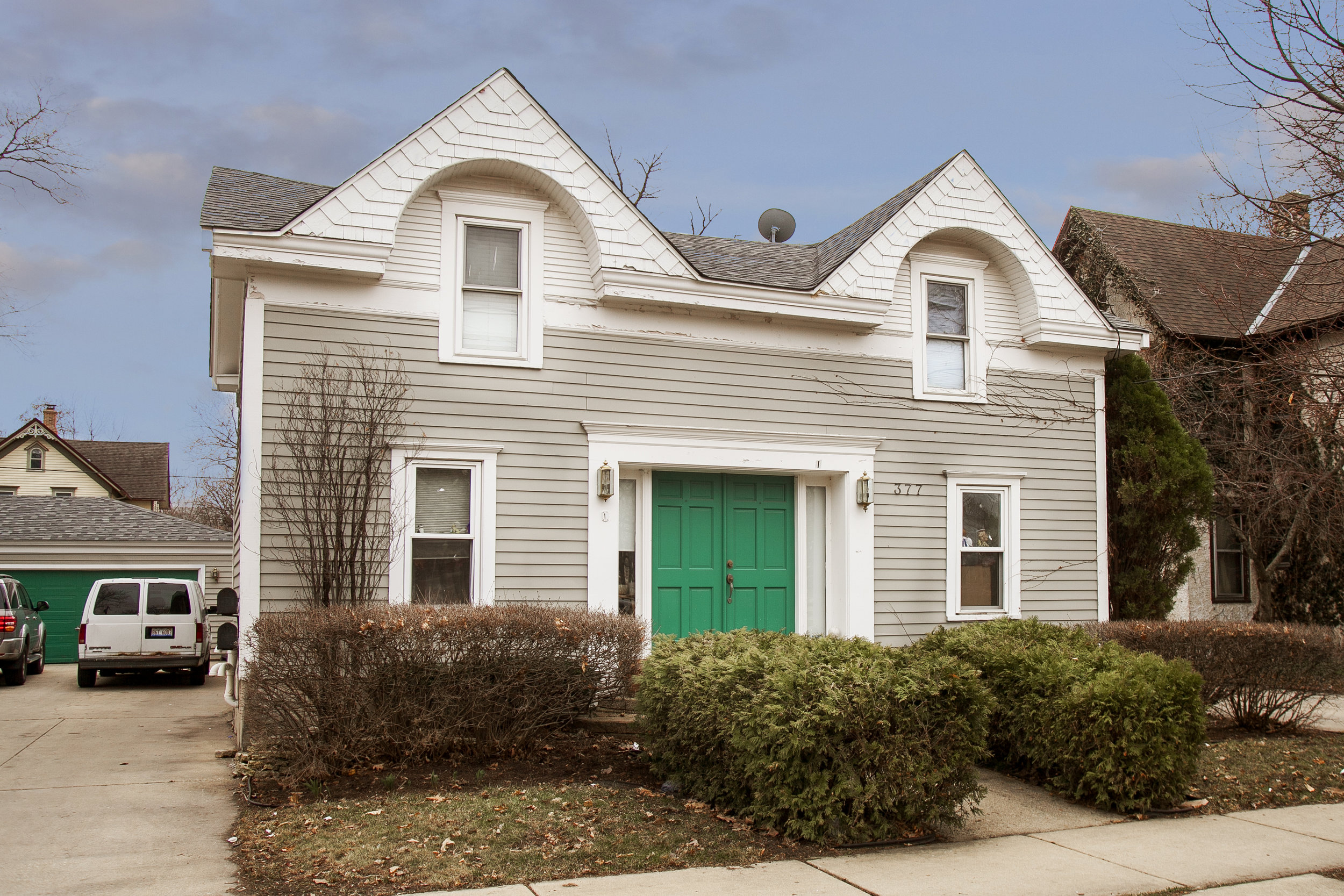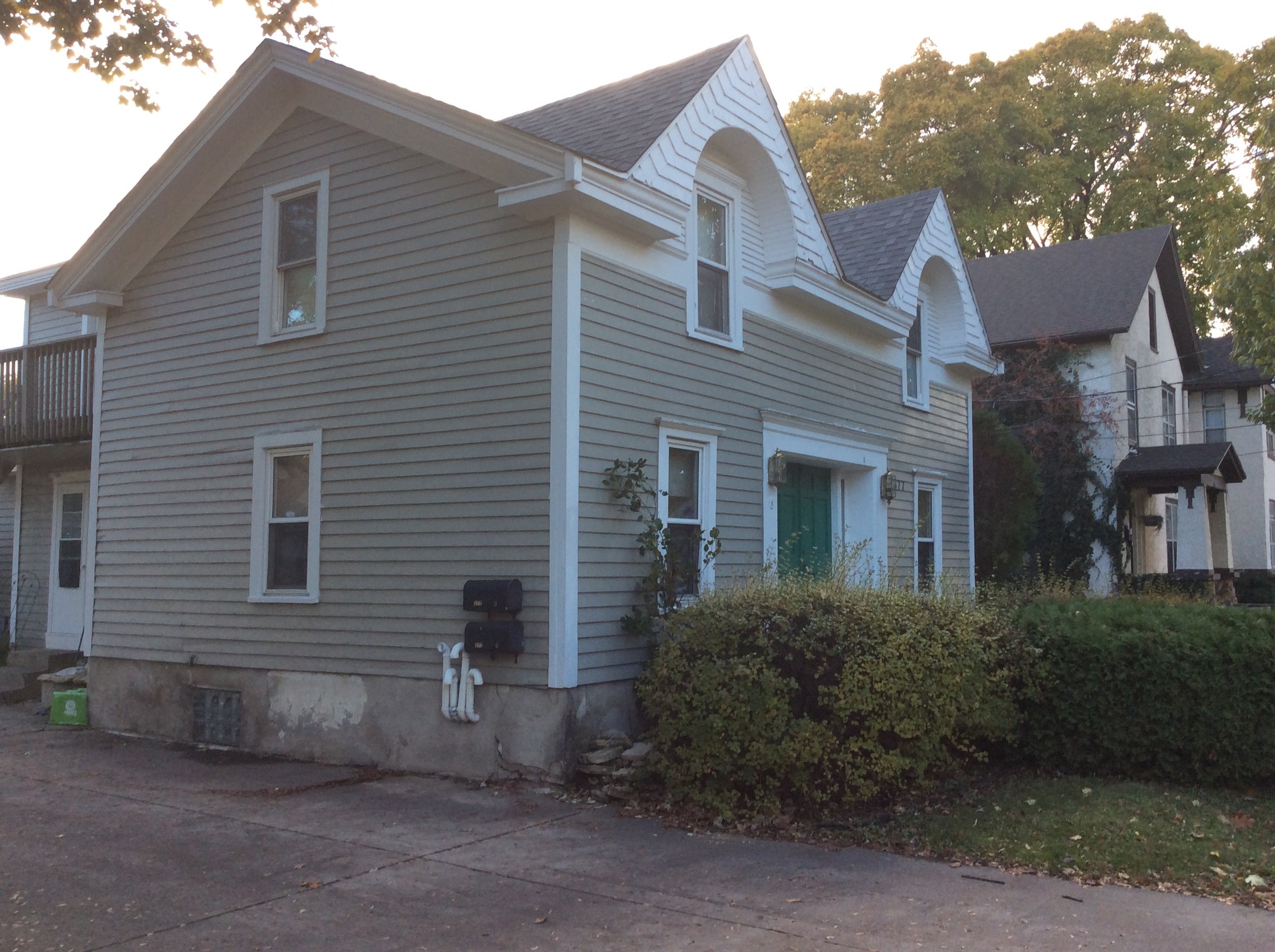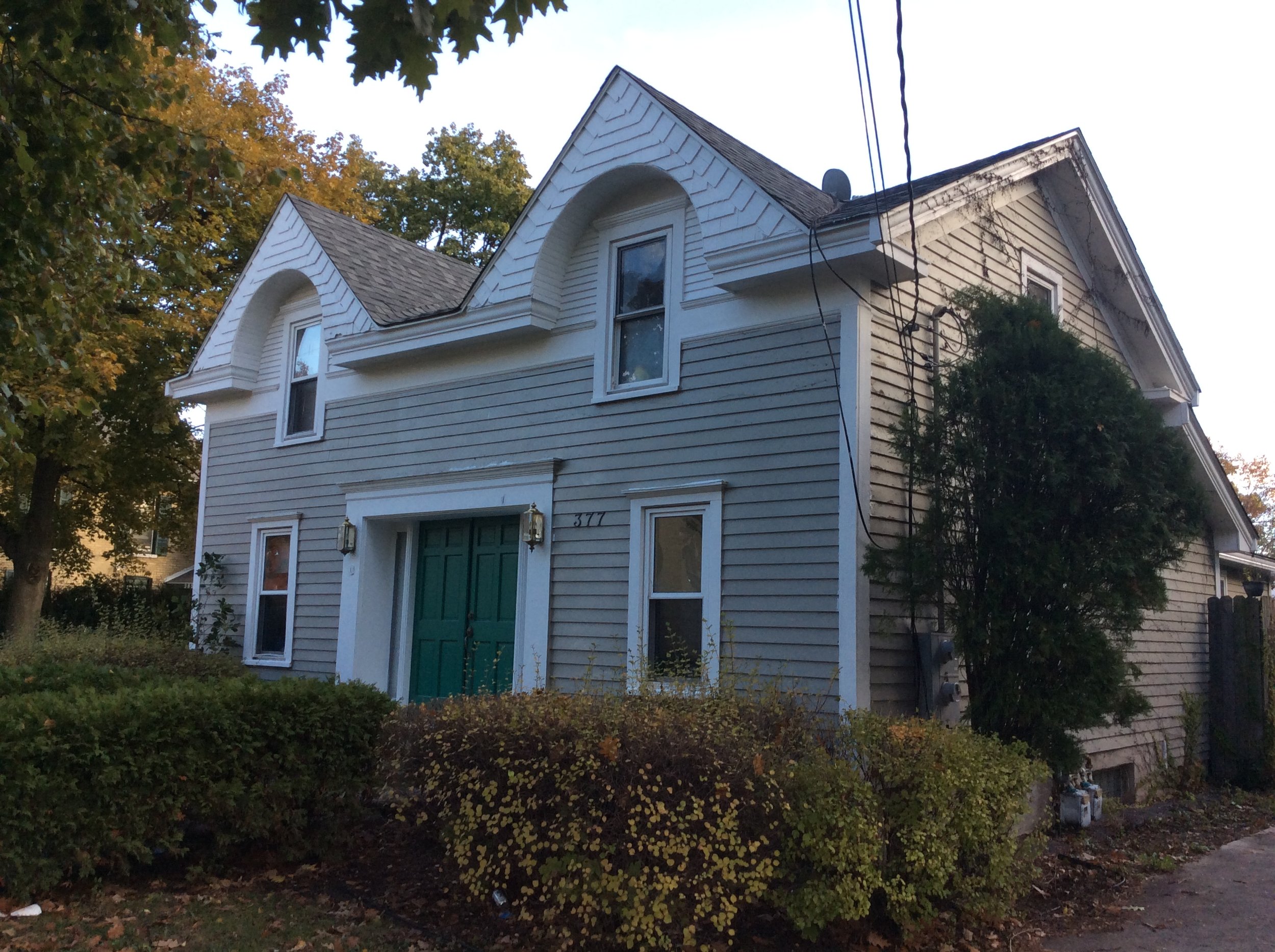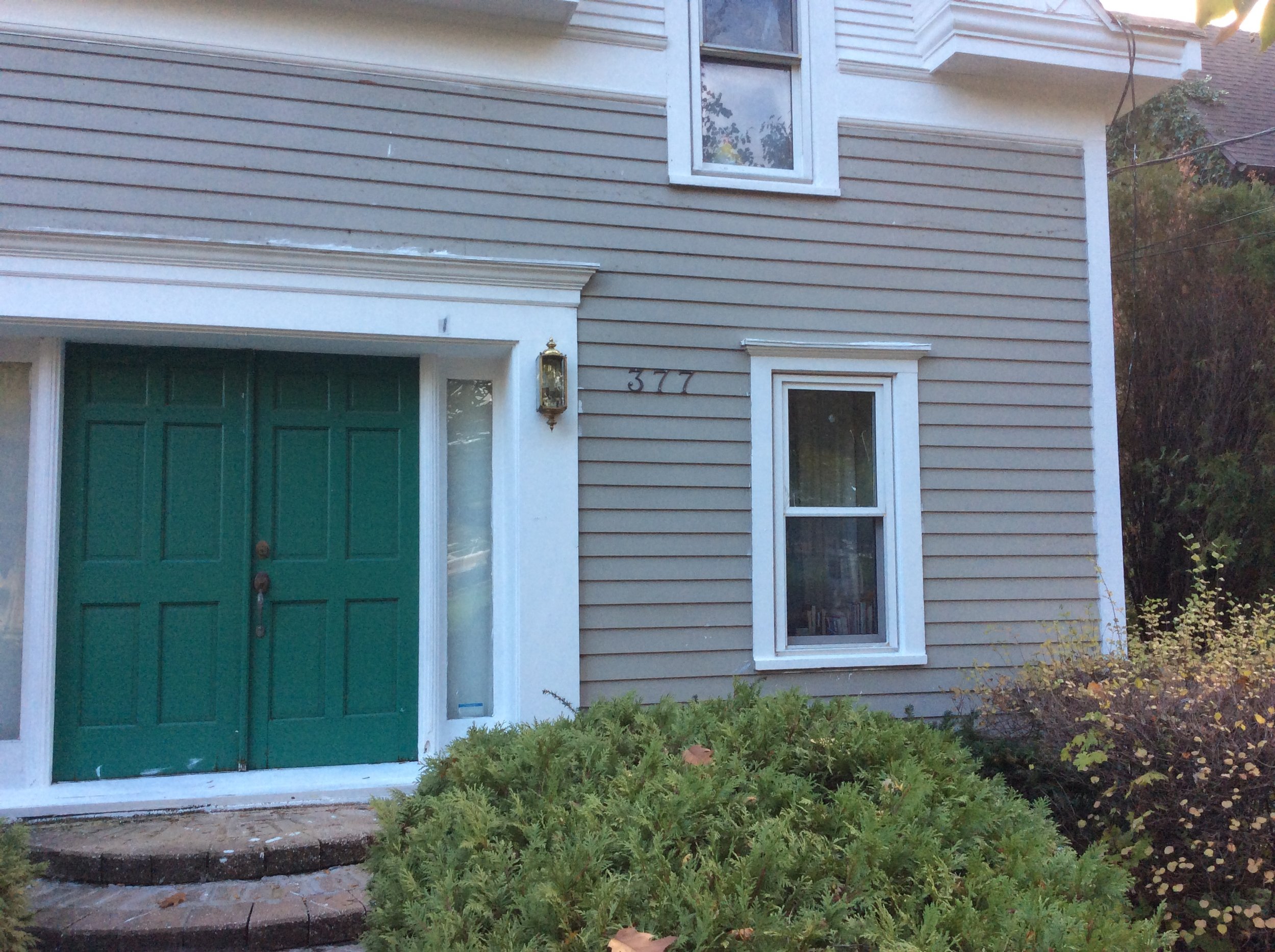377 FULTON STREET
HISTORIC SIGNIFICANCE
In November of 1845, James Gifford sold the property now know as 377 Fulton Street to Thomas Salmon Martin for $50.00. Born in Stormontfield Parish of Scone, Scotland in 1816, he moved to America with his family as a child. After eventually making his way to Elgin, he settled down here permanently, worked as a contract and house builder. In 1850, married Annie Whyte. Whyte, a medical doctor, was also a native of Scotland, born in the town of Meigl, Scotland.
The Martins sold their home in 1849. About 10 years after this initial sale, the lot was broken up and subdivided. The home was occupied by two other owners before being occupied by a notable Elginite, Richard P. Jackson. Jackson purchased the home in 1869 for $1,500.
Jackson was born in New Hampshire in 1834 to parents of English and Welsh ancestry. He apprenticed in the foundry man trade for many years, moving to Iowa and back again, honing his skills. In 1865, he moved to Elgin where he was known as a master metalworker. By 1877, he had opened his own business and became the senior member of R. P. Jackson & Son, Founders and Machinists. Jackson married Samantha Clark in 1857 and together they had two children.
In nearly the 100 years to follow 1869, records indicate that only five other owners lived at the property.
ARCHITECTURAL SIGNIFICANCE
377 Fulton Street exhibits a number of Colonial Revival style elements. This symmetrical, rectangular shaped floor plan, two-storied home has a side gabled roof with two prominent front-facing dormers. Balanced windows on the front façade, along with the accentuated front door are two character defining features seen here. While these windows do not have multi-pane glazing, they are double-hung, a window type common to Colonial Revivals.
TIMELINE OF PREVIOUS OWNERS
Sources: 1991 Heritage Plaque Application; Audio: TextAloud




